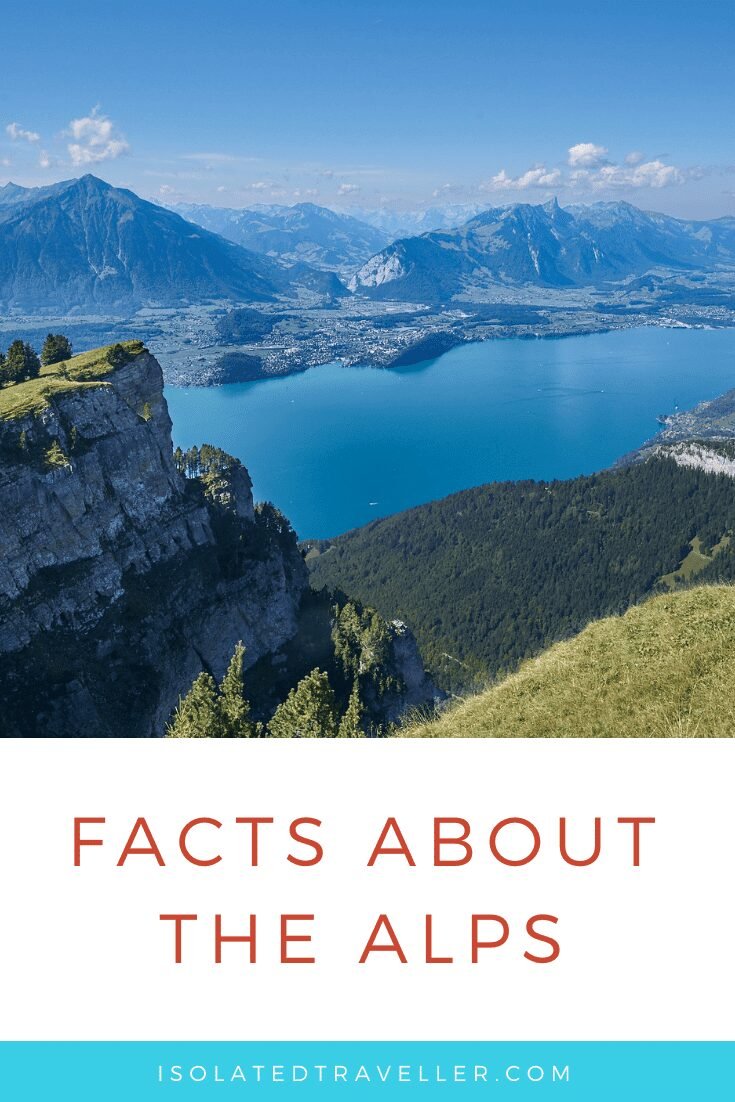The Alps are split into six different regions: The Swiss Alps, The French Alps, the Austrian Alps, the Italian Alps, Bavarian Alps, and the Julian Alps.
The Aletsch Glacier with its 23 km length and 900 m depth is now a UNESCO World Heritage site.
The Alps are home to some of the largest and most well-known ski areas in the world.
Facts About the European Alps
- The Alps formed about 65 million years ago.
- The mountains were formed as the African and Eurasian tectonic plates collided.
- The Alps are generally divided into the Western Alps and Eastern Alps.
- Grenoble is the biggest city in the Alps.
- The highest peak in the Alps is the Mont Blanc, at 4,809 meters (15,777 feet).
- Alps is the greatest mountain range in Europe.
- The Alps are more than 200 kilometres wide at their broadest point between Garmisch-Partenkirchen, Germany, and Verona, Italy.
- 13,000 species of plants have been identified in the Alpine regions.
- The Alps are a habitat for 30,000 species of wildlife.
- Crystals are found throughout much of the Alpine region such as cinnabar, amethyst, and quartz.
- Humans have lived in the Alps since prehistoric times, 50,000 to 60,000 years ago.
- The Alps stretch from Austria and Slovenia in the east, through Italy, Switzerland, Liechtenstein, and Germany to France in the west.
- The Alps are just a part of a larger orogenic belt of mountain chains, called the Alpide belt. It reaches through southern Europe and Asia from the Atlantic Ocean most of the way to the Himalayas.
- A mummified man was found in the Alps at the Austrian/Italian border in 1991, said to be 5,000 years old.
- In the Alps, there are 82 official summits that are at least 4,000 m High.
- Cheese fondue is one of the best known Alpine dishes.
- The Alps maintain a permanent snow blanket over 2750 meters (9,000 feet) above sea level.
- The Alps mountain range is known to have Europe’s highest vineyards. They are at 1500 meters in height.
- In World War II, Adolf Hitler kept a base of operation in the Bavarian Alps throughout the war.
- White Friday occurred during the Italian Front of World War I when an avalanche struck an Austrian barracks on Mount Marmolada, killing 270 soldiers.
- around 120 million tourists visit the Alps every year.
- In the first World War, more than 50000 people were killed by the Alps avalanches.
- the Alps cover only 11% area of Europe, they provide more than 90% water to lowland Europe.









1 Comment
Comments are closed.